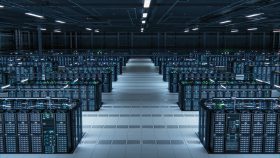Tech Delivers Smart Cities – & Surveillance States

SHANGHAI -- One of the recurring themes here at the Huawei Connect event is a flood of Internet of Things (IoT) technology and smart-city technology that has brought millions of sensors into public spaces that can be used for smart lighting, parking management, video surveillance, and more.
Rapid sensor deployment, combined with IoT networks such as those based on NB-IoT or LoRa, means a deluge of publicly available information. The rapid advance of connected sensors with artificial intelligence means that city managers can watch everything in incredible detail -- and build a data bank on people's movements. This means that not only is your city smarter and more connected than ever before, but you have also been delivered into the surveillance state.
The benefit of sacrificing privacy is safety. One of Huawei's examples is a kidnapping victim in Shenzhen this year; the boy was located and saved within 15 hours when surveillance cameras were able to recognize and track the kidnapper. But there are plenty of other examples. Smart cities initiatives around the world, including the US, are pumping millions of dollars into cities to develop their sensor and video surveillance markets.
It will be interesting to see how far it can go, before some privacy pushback occurs. Public spaces are now commonly protected with video. These video systems can easily be connected to cloud-based facial recognition to track individuals as they move through the city. Networked cameras already make it easier to track vehicles.
Here you can see myself being observed by the handy "Omnipresent Safe City Network," which sends video feeds directly into the cloud.
Huawei demonstrated an image recognition program that it says has 97 percent accuracy in recognizing objects.
Even if video surveillance emerges as a rights issue, there are many less controversial applications grabbing hold in the smart-city space. Huawei rotating CEO Guo Ping talked about the Chinese city of Weifang, which runs 10 smart city applications. These can control product safety, intelligent firefighting, intelligent greenhouses, intelligent dustbins, intelligent parking, vehicle theft production, intelligent lighting, integrated metering, intelligent water management, and intelligent vehicle management, said Ping. LED strip lights are controlled, optimizing utilization and resulting in 6.8 million kWh in annual power savings.
Another example given by Ping is that of missing manhole covers, which could be removed during a storm, for example, posing dangers. Connected manholes would alert officials.
So -- it's clear that smarter cities are arriving. The next question may be: How smart do you want your city to be?
The Futuriom Ultimate Industrial Internet of Things (IIoT) Report covers a wide range of communications and cloud technologies that are being applied to businesses around the world to provide connectivity, analysis, automation, and optimization of a range of industrial applications. For Futuriom community members, we are offering a special discount on a one-user license to this report for 20% off, which means you pay only $760! Go to the report page and use discount code "EDGE" for purchase.
















